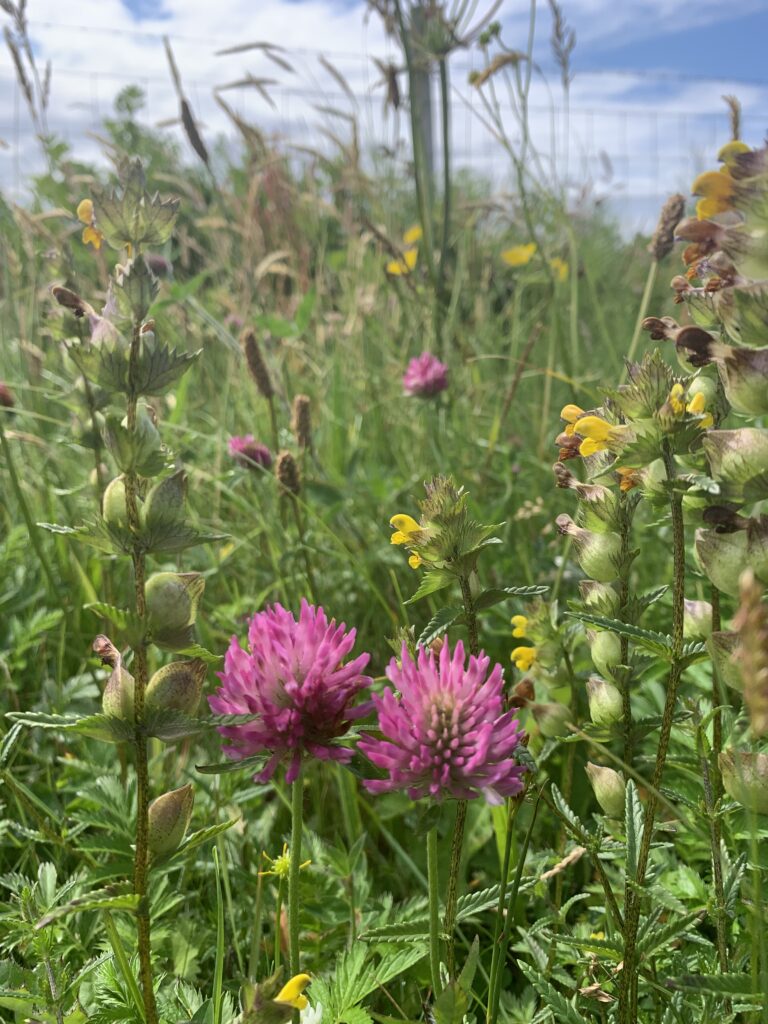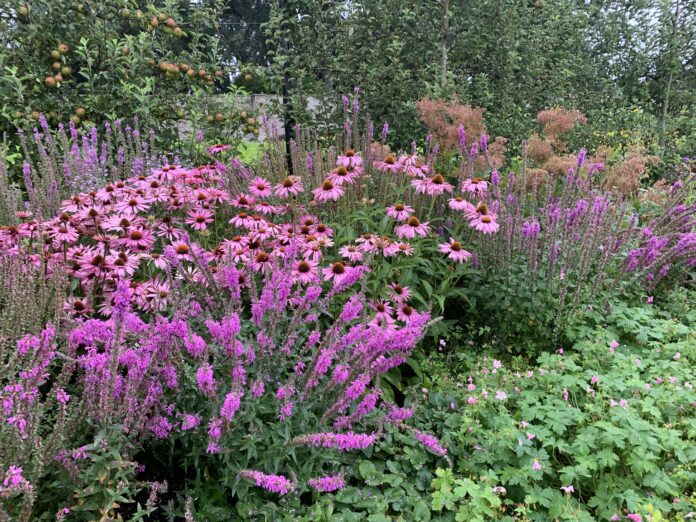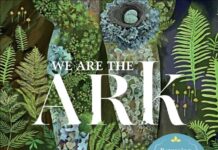Noeleen Smyth updates us on what bees really want – turns out it’s a good location in the city and protein shakes!
I love spring. I love spotting the big-bottomed bumble bees as they emerge with the rising temperatures. Upon emerging, they look a bit worse for wear as they are near starvation. Early spring is a key pinch point for bee survival; they only have a few days to make it. If they haven’t fattened up enough before their winter sleep, they have little time to make up for it before finding themselves in an even more perilous position. It’s been estimated that these emerging spring queens need up to 6,000 flowers a day to muster enough energy to brood their first batch of eggs. No spring flowers mean no baby bees. I enjoy watching them as they fatten up, butts bustling and buzzing when they find a decent meal.
Ireland has 21 native species of bumble bee. They make their nests on or in the ground, at the base of longer grass, or at the bottom of hedgerows. One of our rarest species, the great yellow bumble bee (Bombus distinguendus), is on the verge of extinction. A last outpost for this blonde lady is the Mullet Peninsula in Co. Mayo. The main reason attributed to its decline is the dwindling number of hay meadows. Over six years, The Irish Grassland Surveys highlighted a thirty percent loss in their number. This huge loss was in our very best meadows, known more formally as our EU annexed calcareous grassland and lowland hay meadows. We now hold a handful of traditionally managed meadow sites, in fewer and fewer Irish counties. (Long, M. pers. comm NPWS 2021).
With the negative dramatic change in our meadows and agriculture landscapes, the pressure is on us to create and manage places to support our bees and wildlife. We need many more areas like the Mullet Peninsula. There is, however, a great opportunity to make some very positive changes and to support wildlife and biodiversity in our own gardens and landscapes. More than ever, people seem interested in fostering and encouraging biodiversity in their personal spaces. This is a positive move for the bees, as urban areas cover 3% of the globe and are continuously expanding. Recent figures show that gardens make up over 1/3 of our urban areas (Baldock et al.2019). Urban green space and gardens were also found to support lots of bees and pollinators, with some studies highlighting that these areas can now hold and support many more than surrounding rural areas (Baldock et al., 2019; Normandin et al., 2017). Green spaces in cities now have a very important role to play in species conservation, especially bee and pollinator conservation.
I was particularly delighted with some recent research into urban green spaces that compared planted exotic and mowing managed wildflower meadows around Dublin. The research was carried out by Emma King and Jane Stout at Trinity College Dublin. Their research highlighted the fact that we don’t need to go plastering the place with exotic wildflower seed mixes to support bees and pollinators, simple changes to grass management through less mowing were found to support “diverse plant assemblages and plentiful resources for insect pollinators.” So, there we have it, the humble lawn can be transformed into a pollinator-friendly diverse plant community though not mowing. Great ideas and campaigns like “No Mow May,” and “Don’t Mow Let It Grow” really work for pollinators. Sitting down and forgetting about the lawnmower for a few weeks is the best thing you can do for the emerging bee ladies. Your garden will no longer be just a lawn but transformed into a magical “mini-meadow”, of great value to all the critters in the locality too, by providing connecting corridors between green places “habitat connectivity and reducing fragmentation” – the insect version of the Dublin Bus.
If you do reduce mowing on sites and in your garden, you just might get some complaints, but thankfully people are becoming more aware. There is a growing tolerance towards places with longer grass, daisies, and dandelions. To those who complain, you can now tell: “I’m providing an important floral resource for insect pollinators!” That might quieten the moans of the “mower mads.”
You can read more about Emma’s excellent research work in Dublin on her blog, with even more interesting facts and figures. Highlighting once again that “doing less may be doing more in terms of providing resources for insect-pollinators within urban environments”, is the great article: ‘Which is better – a planted ornamental wildflower meadow or a biodiversity meadow created by reduced mowing? » All-Ireland Pollinator Plan’, found on pollinators.ie.
Bees like their protein shakes
 While the bee ladies are doing all the work, the male bees exist only to reproduce. However, they also need flowers to court the ladies and they gather exotic perfume bouquets to charm them. So, what should you grow in your nursery or sell in your garden centre to help people and their gardens support bees during springtime? Well, first of all, plants with lots of pollen. Bees need a little “pumping up” with protein. For them, a “pollen protein shake” helps them to get in the zone. All members of the pea family are great for bees and are also full of protein. Plant plenty of vegetables like peas, beans; and wildflowers like clover and vetches. These have the best quality pollen, which makes for healthier adult bees.
While the bee ladies are doing all the work, the male bees exist only to reproduce. However, they also need flowers to court the ladies and they gather exotic perfume bouquets to charm them. So, what should you grow in your nursery or sell in your garden centre to help people and their gardens support bees during springtime? Well, first of all, plants with lots of pollen. Bees need a little “pumping up” with protein. For them, a “pollen protein shake” helps them to get in the zone. All members of the pea family are great for bees and are also full of protein. Plant plenty of vegetables like peas, beans; and wildflowers like clover and vetches. These have the best quality pollen, which makes for healthier adult bees.
In a recent study from Bristol, the early spring flowering plants like Helleborus spp. and Pulmonaria spp. – even Skimmia japonica along with pollen-rich Salix spp. – and shrubs such as Pieris spp., were found to be an excellent resource for bees. Autumn is another pinch time for bees. During this time, plants such as the humble ivy Hedera helix, along with attractive perennials like Verbena bonariensis and Sedum spp., were found to be an excellent resource. The study also found that small gardens were as vital as big ones for bee conservation and that gardens planted with pollinator-friendly nectar-rich plants are really important. The species we select and the way we manage our gardens are vital – not every garden is a good bee garden.
Snobby bees
The Bristol study also found that nectar production was higher in more affluent neighbourhoods, but not in larger gardens. This was probably down to affluent neighbourhoods having more flowering plants in the garden. An impressive 636 species of flowering plants were recorded from the 59 gardens surveyed and, surprisingly, shrubs were the main plant life form contributing to nectar production (58%). However, species matter, as some plants like Fuschia spp. – which was common in gardens and full of nectar – are not accessible to pollinators (Tew et. al 2021). So, when you’re choosing plants for the garden this year, choose shorter and more open flowering plants and shrubs – those long and narrow tubular flowers are a bit of a tight squeeze for a big-bottomed bumbler. Planting nectar-rich shrubs and prioritising flowers with an open structure in late summer and autumn will go a long way to supporting bumble bees.
UCD Environmental Horticulture and the All Ireland Pollinator Plan have been busy while the bee ladies were sleeping, scouring the literature to develop a list of top 10 suggestions for bee and pollinator-friendly plants for a variety of situations. We have top ten recommendations for Bedding plants: containers, Bedding plants: hanging baskets, herbs, Bulbs, tough landscaping sites, green roofs, ornamental shrubs and trees for small and large gardens, coastal situations, acid soils, alkaline soils, urban planters, roundabouts, low maintenance gardens and sites ready for publication.
If you have any other suggestions for areas in which you would like a planting list, please get in contact. Our list will be available this spring on pollinators.ie, and the launch will be announced on our Twitter @UCDhort.
  Noeleen Smyth is an Assistant Professor in Environmental Horticulture at University College Dublin. She holds a PhD. and Hons Degree in Botany from Trinity College Dublin and diplomas in Horticulture from Teagasc and RHS. She is a Biodiversity and conservation specialist. As part of her current role, she acts as the CITES Scientific Authority for Ireland, advising the government on rare plant imports. |








